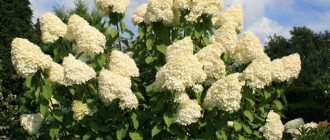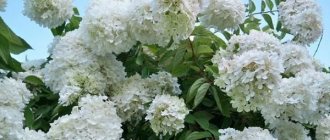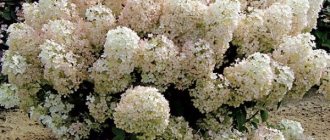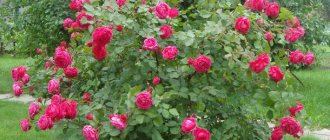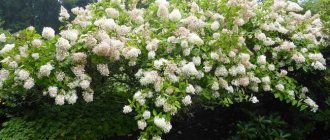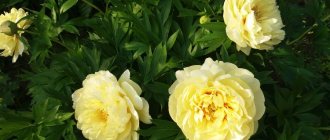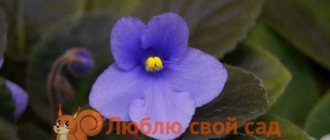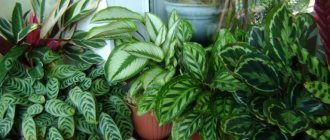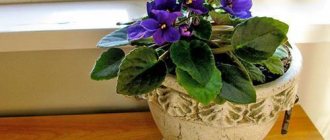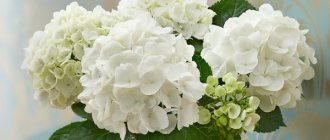Nowadays, the garden market is filled with a large assortment of various ornamental shrubs. Hydrangea takes pride of place among them. Its variety of types and colors allows you to create a piece of paradise in any garden.
Which Hydrangea paniculata to choose: list of the best varieties with photos and descriptions
The diversity of this species is enormous. On the market you can find a large number of varieties with different bush sizes, hardiness, flower color and other characteristics. There are whole series of varieties of ornamental crops with similar characteristics that can be identified by name - for example, Pink, Magical, Vanille and others.
From this large number of varieties, we will introduce you to the old and new, the largest and dwarf, colorful and most beautiful varieties of flowering shrubs with photos and descriptions.
Low-growing varieties of Hydrangea paniculata
This group of relatively dwarf shrubs is represented by a considerable number of bred varieties. Let us describe the most striking varieties.
Hydrangea paniculata Bobo
First introduced in Belgium, where its compact dimensions won many awards. The height of an adult plant of the Bobo variety reaches no more than 0.9 m.
In mid-summer the bushes are covered with large white flowers. They turn pink as the season progresses.
This is an excellent choice of shrub for a hedge or border plant.
You can learn more about planting and caring for this plant from our article - 'A complete guide to growing Hydrangea paniculata'
Hydrangea paniculata Bombshel
This compact shrub reaches about 80 cm in height and width at maturity. Covered with white flowers against green foliage from early summer until frost, this variety produces more flowers per plant than any other Hydrangea.
Blooms earlier and lasts longer than most other Hydrangea paniculata varieties (July to September).
Hydrangea paniculata Cotton Cream
A relatively new variety, released in 2022. A compact plant with beautiful, small, showy cream-colored flowers. The shrub blooms several times per season.
The height of Cotton Cream is up to 80 cm. It is a winter-hardy crop that can withstand frosts down to -30 °C and below.
Hydrangea Little Lime
A relatively compact plant, it grows on average up to a meter in height and produces large (up to 30 cm in length) panicles.
Tightly adjacent inflorescences are light green in color, which closer to autumn acquire shades of pink and later burgundy. This variety grows quite slowly.
Hydrangea paniculata Sunday Fraise (Sundae Fraise)
This variety was created by French breeders based on another variety - Vanilla Fries. The height of the plant is no more than 1 m.
The shrub forms a ball, which practically does not require the formation of a crown. Like most varieties, Sunday Frize blooms white inflorescences, but turns pink closer to autumn. Flowering season is from June to October.
Growing from seeds
Growing hydrangea from seeds is not a difficult, but rather lengthy process, which is best started in the fall. The soil is well suited for this purpose: peat, leaf soil, river sand in a ratio of 2:4:1. This soil is rich in nutrients and favorable for seed growth. As a box, you can use clean containers with drainage holes, pre-filled one-third with expanded clay.
Before planting, the seeds are soaked briefly to swell a little. Then they are carefully transferred to a prepared container with an earthen mixture, sprinkled with a thin layer and watered with a spray bottle. The top of the box is covered with film or glass to create a greenhouse effect. The shelter is removed several times a day for ventilation or watering.
The optimal temperature for germination of seed material is +16-20°C. The soil should be kept moist, but it is not recommended to flood it. After emergence of seedlings, the top covering is removed.
Important! The plant must be picked 2 times.
First, when two germ leaves (cotyledons) appear, by pulling out excess shoots. Then, when the seedlings grow a little and become crowded, each specimen is transplanted into an individual container with a diameter of 6-7 cm (small pots, cups, etc.) with similar soil.
Hardening and maturation of a young culture occurs within two years. In summer, flowers are taken outside and placed in a place protected from direct sunlight, precipitation, wind and drafts. When it gets cold, they are brought indoors. In winter, hydrangea is kept in a cool but well-lit room.
Important! Pick off all buds and prevent flowering at this stage.
After a two-year period, the plant becomes completely ready for transplanting into open ground.
High varieties of tree-like Hydrangea paniculata
These varieties are more suitable for medium and large garden and summer cottage plots. The average height of shrubs can reach 2.5 – 3 meters. We will describe the most popular varieties among domestic flower growers.
Hydrangea paniculata Unique
This variety was developed in Belgium in 1950. In adulthood it reaches a height of up to 3 meters. Often this variety is formed into a tree-like form.
A fast-growing plant, it blooms white sterile flowers from June to the end of September. Towards the end of flowering, the inflorescences change their color to pink.
Hydrangea paniculata variety White Goliath
Shrub with large flowers. At the age of 10 it reaches 4 m in height. The flowers are white. Completely winter-hardy plant.
Flowering period June - August. As they mature, the sepals droop down, changing their color to dull pink.
Hydrangea paniculata Levana
This is a giant among paniculate Hydrangeas. In adulthood it can reach 5 meters in height. The plant produces long, strong stems with conical inflorescences up to 50 cm long, consisting of creamy white inflorescences on long peduncles.
The flowers have long petals. The leaves are medium green, broadly ovate, slightly serrated. Flowering period August – October.
This shrub is best pruned every spring to encourage strong new growth with huge flowers.
Hydrangea paniculata variety Grandiflora (Hydrangea paniculata Grandiflora)
'Grandiflora', imported from Japan in the 1860s, makes an excellent hedge subject. It is a large erect deciduous bush or small tree (up to 4.5 m high) with conical flower panicles 45 cm long, almost completely filled with sterile flowers.
The showy, creamy white inflorescences turn pink as autumn approaches. Blooms profusely from mid-summer to autumn.
You might be interested
Features of growing garden shrubs Hydrangea large-leaved
A Complete Guide to Growing Hydrangea Paniculata
Growing Hydrangea in the garden
The best varieties of Hydrangea paniculata with red flowers
Although the natural appearance of this plant has white inflorescences, breeders have developed many interesting varieties in various shades. Red color is one of the most popular. We will describe several varieties with red flowers.
Hydrangea Wim's Red
The inflorescences of this variety form long, spectacular cone-shaped clusters. They bloom creamy white, then turn pale pink, then fade to bright pink.
Red tones appear in late summer and fall when the flowers glow a burgundy-purple hue. Plants grow from 90 to 1.5 m in height with a spread of 90 to 1.2 m. They grow best in partial shade.
You can learn more about this variety in our article - https://green-design.pro/entsiklopediya-rastenij/gortenziya-metelchataya-sorta-vims-red
Hydrangea paniculata "Strawberry dessert" (Hydrangea paniculata Vanilla Strawberry)
Another name for the variety is Vanille Fraise® 'Renhy'. The flowers bloom creamy white but later turn pink and then red or even burgundy. As new flower heads continue to open until late summer, plants can display all three color stages simultaneously.
The flowers also appear on red stems, which contrasts strongly with the green leaves. Flowering season is from July to September. Plant height up to 2 m.
Hydrangea Magical Vesuvio
A rather unpretentious variety of Dutch origin. It blooms well in the middle zone and in the south of the country, but the plant can also be grown in more northern regions if it is provided with reliable shelter. The height of the bush reaches 1.3 m, and its diameter is up to 1.5 m. At the very beginning of budding, the petals are painted white and light pink.
Towards the end of flowering, they become filled with a rich pink hue with an admixture of red. The flowering period is from late June to late August or early September.
Hydrangea paniculata Diamond Rouge / Rendia (Diamant Rouge / Rendia)
This variety was bred by French breeders. It is a compact shrub with erect stems up to 1.5 m high. Large inflorescences have the deepest red color of all varieties of paniculate Hydrangeas.
This is an early flowering variety, the flowering season is from the end of June, blooming white flowers that turn pink within 2 weeks, and until September they acquire a rich red hue.
Flowers can change their colors depending on lighting, climatic conditions and soil.
Diseases and pests
Red large-leaved hydrangeas have good resistance to diseases. They get sick mainly due to improper planting or care, as well as when grown in unfavorable weather conditions. The most common disease of hydrangeas is chlorosis. It manifests itself in a change in the color of the leaves, which become pale green, while the veins on them remain dark and clearly visible. The cause of chlorosis is a lack of iron in the soil or the inability of the plant to absorb it due to too much alkalization of the soil.
Pale color of the leaf blade is a sign of chlorosis
You can quickly get rid of chlorosis by spraying the bushes with iron sulfate. To avoid this disease, it is necessary not to allow the acidity of the soil to decrease too much, and for prevention it is recommended to add preparations containing iron chelate, for example, Antichlorosis, to the soil.
Poor care and unfavorable weather conditions can provoke the development of fungal diseases on hydrangeas.
Blackening of the leaves may indicate that the hydrangea is infected with a fungal disease.
If various spots, putrefactive deposits, or mold appear on the leaves, it is necessary to remove the affected parts of the plants, and treat the bushes and neighboring plantings with fungicides.
The appearance of pests on large-leaved hydrangeas can also be associated with irregularities in care. One common insect species found on these shrubs is aphids. Large accumulations of the pest can significantly weaken the plant. In this case, it is better to treat the bushes with insecticides.
Aphids usually hide on the back of leaves
If the aphid colonies are small, they can simply be washed off with water or soapy water.
Another pest that is quite common on hydrangeas is the spider mite. This is a microscopic sucking insect that feeds on the sap of young shoots. It can be detected by thin cobwebs entangling the tops of the shoots.
Nests made of spider webs indicate the appearance of spider mites
To combat spider mites, special means are used - acaricides.
The best paniculate hydrangeas with white color
There are quite a few varieties in this group; we will describe the most popular of them.
Hydrangea Prim White
An early flowering variety that blooms flowers at the end of May. Under optimal climatic conditions, a second flowering may occur in September.
The blossoming flowers are initially cream-colored and later turn white. The bush grows up to 1.5 m in height and up to 2 m in diameter. The crown is symmetrical, thin shoots are grayish in color.
Hydrangea paniculata Tardiva
This is a shrub with rigid, erect stems, reaching a height of up to 3 m. Conical inflorescences are 20 cm long.
The color of the petals changes throughout the flowering season, starting off creamy white and turning pink in the fall. Blooms from July to September.
Hydrangea variety Kyushu
A representative of the Japanese flora, it came to Europe thanks to the English breeder Collingwood Ingram from the island of Kyushu.
Shrub up to 3 m in height with strong branches and an openwork crown. Flowering season is from late June to mid-autumn. The inflorescences are white with a pleasant aroma, collected in long and wide panicles.
Hydrangea Sugar Rush (Living Sugar Rush)
This variety can be classified as a low-growing shrub; the height of an adult plant does not exceed 80 cm.
The flowers remain white all season, and only towards the end of flowering the buds change their color to pinkish-cream. The inflorescences are especially lush. This variety blooms from June to September.
Hydrangea paniculata Baby Lace
This is a fairly new variety with a compact and profusely flowering plant. A shrub up to 1 meter high during the flowering period blooms a mass of creamy-white flowers; closer to autumn, red spots form on the flowers.
The plant holds its crown well and does not fall apart. Blooms profusely from July until frost. Well suited for single plantings and in low hedges.
Hydrangea Silver Dollar
A bush with strong straight branches of a dark red color. The inflorescences are large, conical. At the beginning of flowering, the flowers are light green, then turn creamy white, and at the end of the season a delicate pink tint appears.
The leaves are slightly rough with jagged edges. The height of the bush is 1.7 m.
Landing Features
Hydrangeas are spreading flowers, reaching a diameter of up to 3 m. When planting, the distance between individual specimens is determined by morphological properties.
The tree-like subspecies have the widest crown - 10-year-old representatives grow to the size of a small tree.
Large-leaf forms are half as tall, but approach one and a half meters in width. There are climbing subspecies that reach the 3rd floor of the house. Accordingly, the minimum distance, depending on the variety, ranges from 90 cm to 3 m.
Deadlines
As a rule, plants are planted in two seasons - autumn or spring. In summer it is too hot for this, especially since drought can set in, and Hydrangeas love moist air.
Hydrangea red miss
In winter, there is too little sunlight in the premises for harmonious development. And again - dry air from the batteries.
Preparatory work
Hydrangea grows everywhere. Indeed, it prefers sunny places with partial shade, but it also grows well in the shade. Except that the colors will be less vibrant.
Although Hydrangeas respect water and love slightly moist soils, during the rainy season the roots and greenery can be damaged by fungal infections. If the groundwater is shallow somewhere, it is advisable to equip a drainage system at the proposed planting site.
When choosing a plant for the garden, first of all, you need to pay attention to its color and elasticity. Pale leaves, sluggish young shoots, the presence of strange spots and fluffy coating should alert you. Most likely, this specimen is sick. What is dangerous is not even the fact that the seedling may die. It can infect neighboring flowers with fungal or bacterial infections, and the entire area with rust.
Special preparation before landing is not required. According to the botanical description, hydrangeas are strong, life-loving plants that easily take root and take root in a new place. However, it is not superfluous to treat the roots and green mass with a fungicide for prevention, as well as strengthen the immune system with immune preparations - inducers.
“Symbiont-universal”, “Immunocytophyte”, “Novosil” have proven themselves well. A new generation has appeared based on chitosans (chitin derivatives), for example, “Narcissus”, “Slox-eco Artemia”, “Ecogel”. They are practically non-toxic and, in combination with inducers, make it possible to avoid the development of diseases. Humates "Zircon", "Silk" and "Epin" stimulate growth.
Landing technology
- Dig a hole slightly deeper than the root ball and 2-3 times wider.
- Place the seedling in the hole and fill it halfway with soil. Water. After the water has been absorbed, fill the rest of the hole with soil.
- Water thoroughly again so that the voids between the roots are filled with soil.
Other popular varieties of paniculata Hydrangea
Here we have compiled a list of varieties that are not included in the groups described above, but are nevertheless quite popular among gardeners.
Hydrangea "Vanilla Fraise"
This is one of the most popular varieties from French breeders with the most abundant flowering. Winner of many awards and prizes. On the Internet you can find the English name of the variety - “Vanilla Strawberry” or “Vanilla Strawberry”. We wrote a few words about this variety above.
The Vanilla Fraze shrub is round in shape, up to 2 m high. The inflorescences are pyramidal in shape, very large (up to 40 cm), white in color, turning into a pink tint.
Hydrangea paniculata Magical Moonlight
A fairly tall plant, reaching 2 meters or more at maturity. The inflorescences are formed from delicate flowers that change color several times per season - starting with white-green, then pure white and finally pink.
The inflorescences are pyramidal and also quite voluminous.
Hydrangea Magical Candle
Another representative from the Magical series of varieties. The bush grows to a height of about 2 m. The flowering season is from July to September. This variety is notable for its large inflorescences, sometimes reaching a length of 30 cm.
The flowers change color throughout the flowering period, starting with greenish, then cream, pink and finally crimson. The flowering season is from early summer to October. An excellent bush for forming a hedge or in a flower arrangement.
Hydrangea paniculata Phantom
Another record holder among flowering shrubs, famous for the size of its inflorescences. At the height of flowering they can reach 40 cm in length. The bush itself reaches a height of 2.5 m.
Starting from the first days of June, the plant is abundantly covered with large cream-colored inflorescences, which by the end of the season changes to a delicate pink. Quite a frost-resistant variety, down to -35 °C.
Hydrangea Limelight
The result of Dutch selection. The height of the spherical shrub is 2.5 m. The inflorescences reach 30 cm in length, green and white at the beginning of the flowering period, and at the end of the season they change their color to pink.
Well suited for unshaped hedges. Often used to separate zones in the garden or front garden.
Hydrangea paniculata Pinky Winky
A bright representative of the Pink variety series. Launched in Belgium in 2003. It is notable not only for its flowers, but also for the decorativeness of its foliage, which also changes color throughout the growing season, starting from green and ending with a purple or violet hue.
Cone-shaped inflorescences change color from white to purple-pink. A fast-growing plant, it can grow up to 30 cm in a year, reaching a maximum height of 2 meters.
Hydrangea paniculata Samarskaya Lidiya
Another name for the variety is Rensam. But in our country the first name took root. Although the variety has a Russian name, it was bred in France in 2022. Why is this variety popular among gardeners? A medium-height shrub (about 1.5 m) with strong shoots bearing large inflorescences with flowers that change color from white to bright crimson at the end of the season.
Due to its small growth, the plant goes well with other flowering crops in the flower garden. Grows well in a container.
Hydrangea Diamantino
The peculiarity of the variety is its lush, long-lasting flowering. The bush is vertical in shape, up to 1.2 m high. The branches are straight, rigid and do not require garter. Dense inflorescences up to 25 cm in length, unlike other varieties, have a rounded shape.
At the beginning of the flowering season (beginning of June), the petals are yellow-green or golden in color, which then turn white, turning light pink in the fall. An excellent companion for flowering shrubs and tall herbaceous flowers.
Hydrangea paniculata Pastel Green (Pastel Green/Rencolor)
A representative of the French selection, a medium-height bush (1.5 m) with numerous sterile flowers collected in large round or conical inflorescences, up to 20 cm in diameter.
The flowers constantly change shades as they bloom, from white or cream, then pale green, pistachio green, pure pink and ending in raspberry pink. The flowering season is long, from mid-July to the end of September.
Hydrangea Fraise Melba
One of the varieties bred by French breeders, which appeared on sale in our country in 2014. Cone-shaped inflorescences up to 50 cm in length, gradually change color from white to burgundy.
But the top always remains whitish, and the base changes to reddish over time. The flowering period is from mid-July to the end of September. Plant height is up to 2 meters.
Hydrangea paniculata Pink Diamond
A large deciduous shrub or small tree up to 2.5 m tall with a spreading crown. The bark is brown-gray, flaking, greenish-brown, pubescent in young shoots. The leaves are about 7.5–10 cm long, elliptical to oblong, serrated along the edge, dense, dark green above, lighter below, hairy, modest autumn color.
The flowers are collected in a pyramidal panicle 8–20 cm long, 9–18 cm wide. The red flowers are sterile, with 3–5 white, greenish or pinkish sepals, up to 5 cm in diameter.
We have briefly described the best varieties of Hydrangea paniculata. In fact, the diversity of this species is very large and new varieties are constantly being created that constantly delight their owners with their unique flowers. You can also watch this video, which briefly describes the TOP 10 varieties of paniculata Hydrangeas according to their popularity among gardeners.
The article uses materials from several resources:
- ruspitomniki.ru
- docplayer.com
Color variations
Spiraea - species and varieties with white and pink flowers
Red or crimson hydrangea, for example, the Prima variety, will become a bright decoration of any garden plot. The Goliath variety is distinguished by deep pink inflorescences with a diameter of about 25 cm.
White flowers are the most popular; hybrid varieties are distinguished by their ease of care, immunity to diseases and frost resistance.
Variety Ramars is a decorative purple hydrangea. Alba is a beauty with soft pink petals.
Green hydrangea is not particularly decorative, but thanks to the unusual color of the petals it looks very elegant.
Yellow hydrangea can be grown in flower beds or used as a component of landscape compositions; this plant also looks beautiful when planted alone thanks to its elegant lush inflorescences, reminiscent of the sun descending from heaven to earth.
Burgundy hydrangea is a real aristocrat of the flower world. The easiest way to propagate this noble flower is by cuttings. Can be used as a cut flower to make bouquets.
Amazing hydrangea flowers are good for making original bouquets
